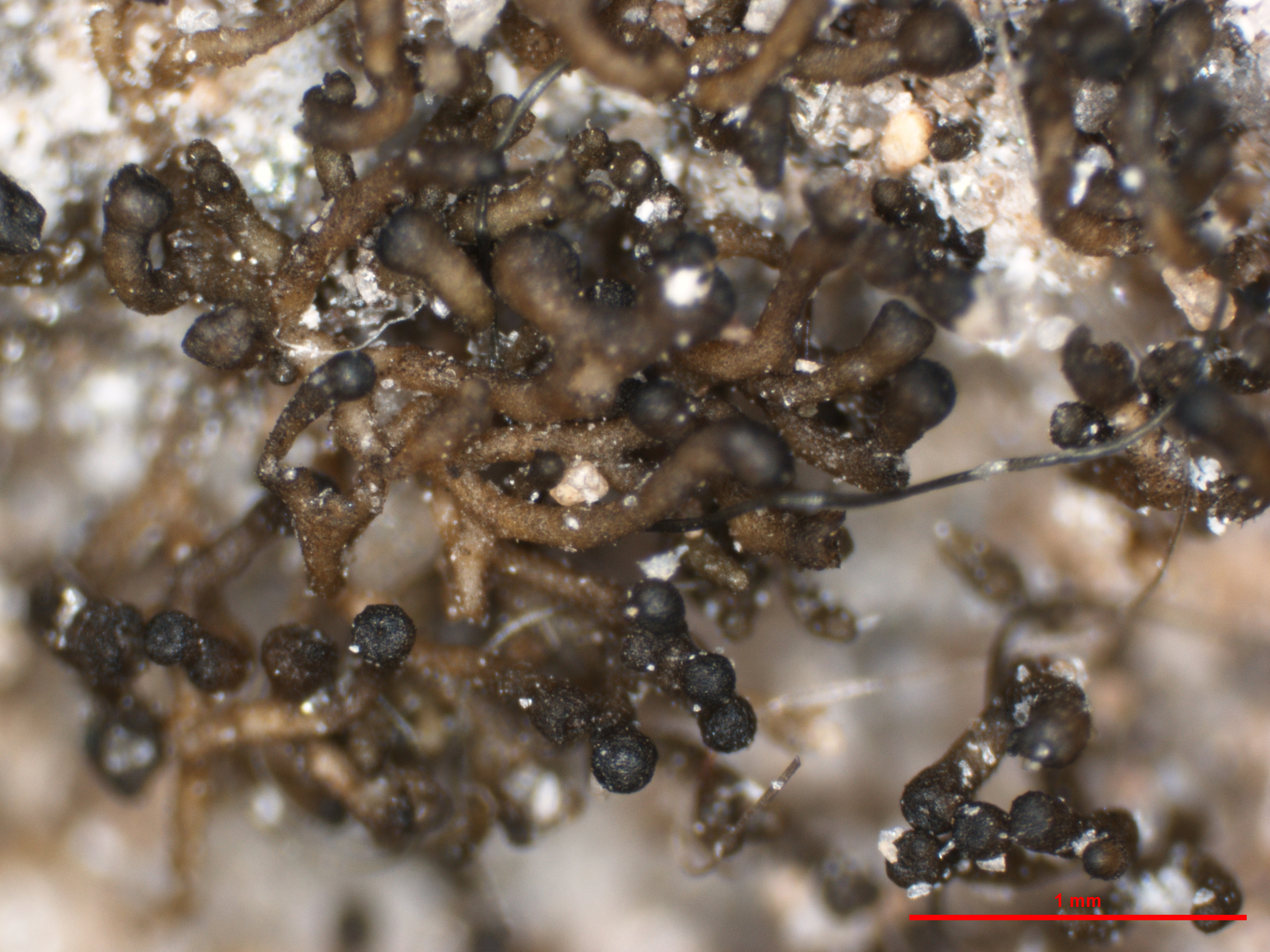
- Home
- Search
- Images
- Species Checklists
- US States: O-Z >
- US National Parks
- Central America
- South America
- US National Parks
- Southern Subpolar Region
|
|
|
|
Family: Lichinaceae
[Lichina confinis f. willeyi Tuck.] |
MB# 345264 TYPE. UNITED STATES. Massachusetts, Essex County, Pigeon Cove, IX.1864, E. Tuckerman & S.E.S Tuckerman sn. (FH-Tuck., type); Bristol County, Dartmouth, 1862, H. Willey s.n. (US, type). Description. Life form: lichenized fungus. [Modified from Henssen 1969] Thallus micro-fruticose, dark brown, spreading extensively over rock, composed of numerous, erect, simple or +/- dichotomously branched, cylindrical lobes 1-3 mm tall x 0.1-0.15 mm thick. Thallus in longitudinal section is 145-200 μm wide, very gelatinous. Photobiont cyanobacteria Dichothrix baueriana, mainly peripheral, filaments orientated so that the basal heterocysts lie in the innermost part of the thallus and the gradually attenuated part of each is frequently partly extruded beyond the surface of the thallus. Ascomata pycnoascocarpia (i.e., developing from pycnidia), terminal, sometimes superimposed, immersed, up to 0.4 mm diam.; ostiole apical, ~0.1 mm wide. Ascomatal wall indistinct or composed of a few rows of angular cells. Thalline margin thick, often partly elongating into lobules. Hymenium 160-200 μm high, subhymenium 30-70 μm high. Asci narrow-cylindrical, 50-110 x 60-9-5 μm, walls soon evanescent. Ascospores uniseriate or partly biseriate in the ascus, eight or fewer, hyaline, globose or subglobose, frequently angular by compression within the ascus, 11.0—13.5 X 8-12 μm, with a plasma bridge, wall ~1 μm thick when mature. Primary paraphyses (=elongated conidiophores) ~1 μm thick; secondary paraphyses sparsely developed, 1.0-1.5 μm thick, distinctly septate, anastomosing at the base, simple above, terminal cell not conspicuously swollen. Pycnidia ~1.0-1-5 μm thick; conidia arising terminally and rarely subterminally ~3.5-5-5 x 1 μm, thickest in the middle. Chemistry. Not reported. Substrate and Habitat. Semi-aquatic on siliceous rocks near stream edges. Distribution. Eastern North America; in North Carolina found in the Piedmont and Blue Ridge ecoregions. Notes. (From Henssen 1969) The ascomata in this species develop from pycnidia. At first the conidiophores elongate to develop into primary paraphyses between which the asci are developed. The primary paraphyses soon gelatinize and are replaced by a sparse development of secondary paraphyses. Literature Henssen, A. (1969) Three non-marine species of the genus Lichina. The Lichenologist 4(2): 88-98. Tuckerman, E. (1882) A synopsis of the North American lichens. Part. I. Comprising the Parmeliacei, Cladoniei and Coenogoniei. S.F. Cassino, Boston, 262 pp (original description as Lichina confins * willeyi). |














